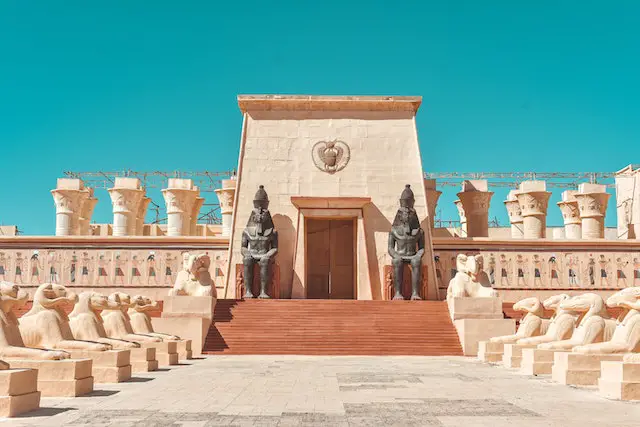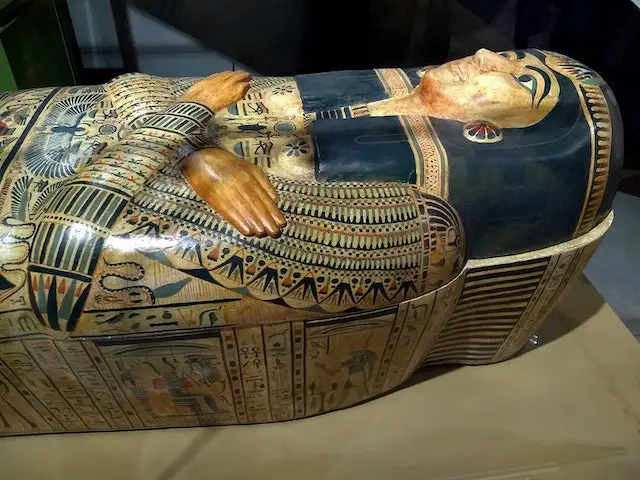
Ancient Egyptian tombs have long captivated the imagination of historians, archaeologists, and enthusiasts alike.
These magnificent burial sites offer a glimpse into the lives, beliefs, and customs of a civilization that flourished thousands of years ago.
In this article, we will delve into the fascinating world of ancient Egyptian tombs, exploring their history, architecture, and the secrets they hold.
The History of Ancient Egyptian Tombs

The ancient Egyptians believed that after death, their souls would continue to live on in the afterlife.
To ensure a successful transition into the afterlife, they built elaborate tombs and burial sites for their loved ones.
Early Dynastic Period (c. 3100-2686 BCE)
The earliest known tombs in ancient Egypt date back to the Early Dynastic Period.
These simple structures, known as mastabas, were rectangular in shape and made of mud-brick.
They served as the final resting place for the elite members of society, including high-ranking officials and members of the royal family.
Old Kingdom (c. 2686-2181 BCE)
During the Old Kingdom, the construction of tombs evolved significantly.
The most famous tombs from this period are the pyramids, which were built as grand monuments to house the remains of the pharaohs.
The Great Pyramid of Giza, built for Pharaoh Khufu, is the largest and most well-known of these structures.
Middle Kingdom (c. 2055-1650 BCE)
In the Middle Kingdom, tomb architecture shifted away from the pyramid style and returned to the mastaba design.
However, these tombs were now constructed from stone rather than mud-brick.
The Middle Kingdom also saw the rise of rock-cut tombs, which were carved directly into the cliffs of the Theban necropolis.
New Kingdom (c. 1550-1070 BCE)
The New Kingdom marked a significant change in tomb construction, with the introduction of the Valley of the Kings.
This secluded valley became the primary burial site for pharaohs, and its tombs were hidden underground to deter tomb robbers.
The most famous tomb from this period is that of Tutankhamun, which was discovered almost entirely intact in 1922.
- Read also: How Did King Tut Die
- Read also: How Did Cleopatra Die
The Architecture of Ancient Egyptian Tombs

Ancient Egyptian tombs were typically characterized by their grandiose architecture and lavish decorations.
The architects, artists, and artisans who worked on these tombs strived to create monuments that honored the deceased while simultaneously warding off malicious spirits.
Let’s take a closer look at some of the key features of ancient Egyptian tomb architecture.
Mastabas
Mastabas were the earliest form of ancient Egyptian tombs. They were rectangular structures with sloping sides and a flat roof, typically made from mud-brick.
The interior of a mastaba contained a burial chamber for the deceased, as well as storage rooms for offerings and personal belongings.
Pyramids
The pyramids are the most iconic ancient Egyptian tombs.
These massive structures were built using large limestone blocks and were designed to protect the pharaoh’s body and ensure their safe passage to the afterlife.
The interior of a pyramid contained a series of chambers, including the burial chamber, which housed the sarcophagus and the pharaoh’s mummy.
Rock-Cut Tombs
Rock-cut tombs were carved directly into the cliffs of the Theban necropolis. These tombs featured a long, sloping entranceway that led to a series of chambers, including the burial chamber. The walls of rock-cut tombs were often adorned with intricate carvings and paintings depicting scenes from the deceased’s life and the afterlife.
Underground Tombs
Underground tombs, such as those found in the Valley of the Kings, were designed to be hidden from view.
These tombs were accessed through a narrow, sloping corridor that led to a series of chambers, including the burial chamber.
The walls of these tombs were decorated with elaborate paintings and inscriptions, which served both as a guide to the afterlife and as protection against tomb robbers.
The Secrets of Ancient Egyptian Tombs

Intro: Ancient Egyptian tombs were ornate monuments built to honor and protect the deceased.
They featured intricate carvings, paintings, inscriptions, and more – all designed to serve both as a guide for the spirit of the deceased on their journey through the afterlife and as protection against tomb robbers.
The secrets of these tombs remain largely undiscovered even today, and much of their contents are only just beginning to be revealed.
Tomb Art and Inscriptions
The walls of ancient Egyptian tombs were adorned with intricate carvings, paintings, and inscriptions.
These decorations served a variety of purposes, including guiding the deceased through the afterlife, providing protection against evil forces, and offering a glimpse into the life and beliefs of the individual buried within.
Mummification and Burial Practices
Mummification was a crucial aspect of ancient Egyptian burial practices, as it was believed that preserving the body would ensure the deceased’s safe passage to the afterlife.
The mummification process involved removing the internal organs, treating the body with preservatives, and wrapping it in linen bandages.
The mummy was then placed in a sarcophagus and interred within the tomb, surrounded by personal belongings and offerings to sustain them in the afterlife.
Tomb Robbery and Preservation
Tomb robbery was a significant issue in ancient Egypt, as the valuable items buried with the deceased were highly sought after.
To combat this problem, tombs were often hidden or protected with curses and traps.
Despite these efforts, many tombs were looted over the centuries, and their treasures have been lost to history.
However, some tombs, such as that of Tutankhamun, have been discovered largely intact, providing invaluable insights into ancient Egyptian culture and burial practices.
- Read also: 10 Fascinating Ancient History Facts
- Read also: The Fascinating of Aztec Mythology
Conclusion
Ancient Egyptian tombs are a testament to the incredible skill and ingenuity of the civilization that built them.
These fascinating structures offer a window into the lives, beliefs, and customs of a society that existed thousands of years ago.
As we continue to explore and uncover the secrets of these tombs, we gain a deeper understanding of the rich history and culture of ancient Egypt.



